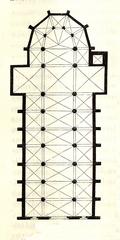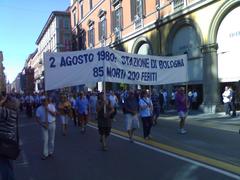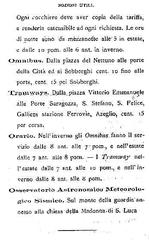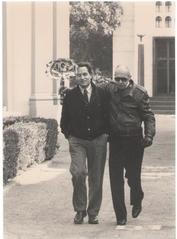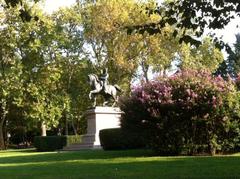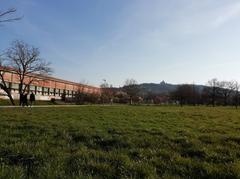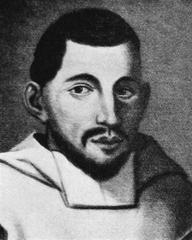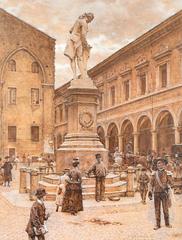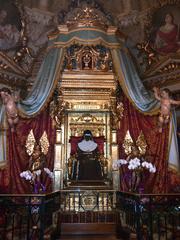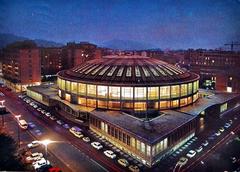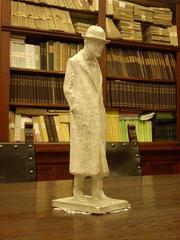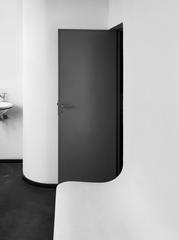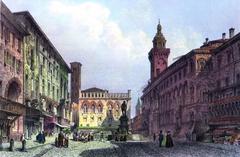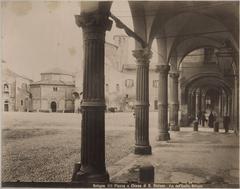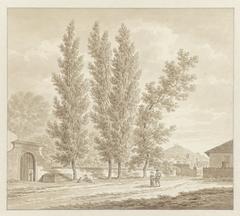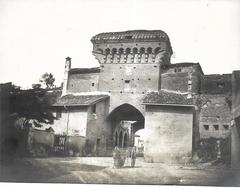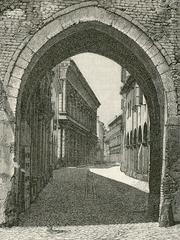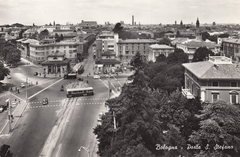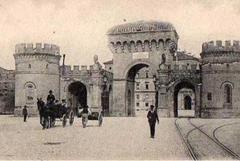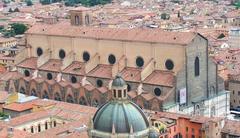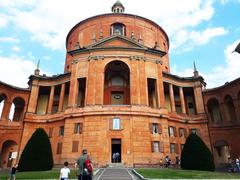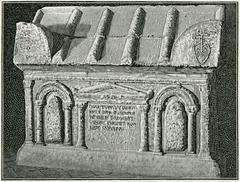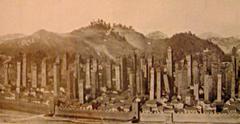Visiting Ugo Bassi in Bologna: Hours, Tickets, and History
Date: 19/07/2024
Introduction
Bologna, a city renowned for its rich tapestry of history, culture, and academia, is also home to the enduring legacy of Ugo Bassi, a pivotal figure in the Italian unification movement. Bassi, a Barnabite friar born in 1801, played a crucial role in the Risorgimento, the tumultuous period that saw Italy’s struggle for independence and unity. His life was marked by passionate sermons, social justice advocacy, and unwavering dedication to the cause of freedom, which ultimately led to his martyrdom at the hands of Austrian forces in 1849. Today, Ugo Bassi’s legacy is etched into the very fabric of Bologna, with numerous monuments, museums, and streets bearing his name, offering visitors a profound insight into the city’s historical and cultural landscape. This guide aims to explore the key sites associated with Ugo Bassi in Bologna, provide practical visitor information, and uncover hidden gems that enrich the experience of this captivating city. (source) (source)
Table of Contents
- [Exploring the Historical Significance of Ugo Bassi in Bologna](#exploring-the-historical-significance-of-ugo-bassi-in-bolognaexploring-the-historical-significance-of-ugo-bassi-in-bologna)
- [Key Sites and Visitor Tips](#key-sites-and-visitor-tipskey-sites-and-visitor-tips)
- [Exploring Ugo Bassi](#exploring-ugo-bassiexploring-ugo-bassi)
- [Top Attractions](#top-attractionstop-attractions)
- [Visiting Hours](#visiting-hoursvisiting-hours)
- [Travel Tips in Bologna](#travel-tips-in-bolognatravel-tips-in-bologna)
- [Discover Bologna](#discover-bolognadiscover-bologna)
- [Visiting Hours](#visiting-hoursvisiting-hours-1)
- [Tickets](#ticketstickets)
- [Hidden Gems](#hidden-gemshidden-gems)
Exploring the Historical Significance of Ugo Bassi in Bologna
Key Sites and Visitor Tips
While ‘Ugo Bassi’ in Bologna doesn’t refer to a specific monument or attraction, it represents a significant historical figure deeply intertwined with the city’s past. Understanding Ugo Bassi’s life and legacy provides valuable context for any visitor to Bologna, enriching their experience and appreciation for the city’s cultural landscape.
Ugo Bassi - A Life Dedicated to Faith and Freedom
Born in Bologna in 1801, Ugo Bassi was a Barnabite friar who rose to prominence during the tumultuous period of Italian unification, known as the Risorgimento. He was a charismatic preacher, captivating audiences with his passionate sermons blending religious fervor with patriotic ideals.
Bassi’s eloquence extended beyond the pulpit. He was a gifted orator and writer, using his skills to advocate for social justice and Italian unification. His powerful words resonated with the people, making him a symbol of hope and resistance against Austrian rule.
A Chaplain of the People
When revolution swept across Italy in 1848, Ugo Bassi didn’t shy away from the call to action. He joined the fight for independence, serving as a chaplain for the Roman Republic’s volunteer forces. His presence on the battlefield, tending to the wounded and offering spiritual solace, solidified his image as a man of the people, deeply connected to their struggles and aspirations.
Bassi’s unwavering commitment to the cause of a unified and free Italy came at a great personal cost. Captured by Austrian forces in 1849, he was tried for treason and sentenced to death. His execution, at the young age of 48, only served to elevate him to the status of a martyr for Italian unification.
Ugo Bassi’s Enduring Legacy in Bologna
Today, Ugo Bassi’s legacy is deeply woven into the fabric of Bologna. His name graces a major street in the city center, Via Ugo Bassi, a bustling thoroughfare lined with shops, restaurants, and historical buildings. Walking along this street, visitors are reminded of the sacrifices made by Bassi and countless others who fought for Italian unity.
Beyond the street name, Ugo Bassi’s memory is kept alive through various monuments and memorials scattered throughout Bologna:
- Basilica di San Petronio: Inside this grand basilica, a plaque commemorates Ugo Bassi’s role as a chaplain during the Italian Wars of Independence. Open daily from 7:45 AM to 6:30 PM. Admission is free.
- Museo del Risorgimento: Located in Palazzo Ghisislardi Fava, this museum houses artifacts and documents related to the Risorgimento, including materials related to Ugo Bassi’s life and work. Open from Tuesday to Sunday, 10:00 AM to 6:00 PM. Tickets are €5 for adults and €3 for students.
- Certosa di Bologna: This historic cemetery, known for its elaborate sculptures and monuments, contains a monument dedicated to Ugo Bassi, a testament to his enduring legacy. Open daily from 8:00 AM to 6:00 PM. Admission is free.
Exploring Ugo Bassi
Top Attractions
Porta San Donato and its Surroundings
- Porta San Donato: This ancient city gate, part of Bologna’s medieval walls, marks the beginning of Via San Donato. Built in the 13th century, it stands as a testament to the city’s rich history. (source)
- Parco della Montagnola: A short walk from Porta San Donato, this park offers a green escape from the city buzz. It’s perfect for relaxation, open-air concerts in summer, or children’s play areas. (source)
- MAMbo - Museo d’Arte Moderna di Bologna: Located within the park, MAMbo showcases contemporary and experimental art, making it a must-visit for art enthusiasts. (source)
Along Via Ugo Bassi
- Basilica di San Francesco: This impressive 13th-century church boasts a stunning Gothic facade and significant artworks. Its location on Via Ugo Bassi makes it easily accessible. (source)
- Piazza Malpighi: This lively square, named after the renowned Bolognese anatomist Marcello Malpighi, is a hub of activity with shops, cafes, and restaurants, perfect for soaking up the local atmosphere.
- Teatro Duse: This historic theater, inaugurated in 1922, hosts a variety of performances, from plays to concerts. Check their schedule for a taste of Italian theater. (source)
Exploring Further Afield
- Bologna Centrale Railway Station: Ugo Bassi’s proximity to the central station makes it a convenient base for exploring other parts of Bologna and beyond. Trains to Florence, Venice, Rome, and other Italian cities are easily accessible. (source)
- University District: A short walk from Ugo Bassi takes you to the heart of the oldest university in the Western world, the University of Bologna. Explore historic university buildings, libraries, and the vibrant student atmosphere. (source)
- The Two Towers: No visit to Bologna is complete without seeing the iconic Two Towers, Asinelli and Garisenda. While a bit of a walk from Ugo Bassi, it’s a pleasant stroll through the city center. (source)
Visiting Hours
Most historical sites in Bologna, including the Basilica di San Petronio and the Archiginnasio, are open from 9 AM to 6 PM. However, it’s advisable to check specific visiting hours on official websites.
Travel Tips in Bologna
- Buses: Several bus lines run along Via Ugo Bassi, connecting to various parts of the city.
- Taxis: Taxis are readily available throughout the area.
- Walking: Ugo Bassi and its surrounding areas are easily walkable, allowing you to soak up the city’s charm at your own pace.
Discover Bologna
Visiting Hours
Most historical sites in Bologna, including the Basilica di San Petronio and the Archiginnasio, are open from 9 AM to 6 PM. However, it’s advisable to check specific visiting hours on official websites.
Tickets
Entry fees vary by site. The Archiginnasio, for example, charges around €3, while the Basilica di San Petronio has a suggested donation. Purchase tickets online to avoid long queues.
Hidden Gems
Whispers from the Past
Legend has it that Bologna is home to numerous secret passages and underground canals, remnants of its medieval past. While some remain hidden, others, like the Canale delle Moline, can be glimpsed, offering a peek into the city’s intriguing history.
The Devil’s Detail
Look closely at the Basilica di San Petronio, and you’ll notice a curious detail. The meridian line, a sundial-like feature, was designed by the renowned astronomer Giovanni Domenico Cassini. However, local lore claims the Devil intervened, causing an error in its measurements.
Conclusion
In conclusion, Bologna’s connection to Ugo Bassi is a testament to the city’s deep historical roots and its role in the broader narrative of Italian unification. From the bustling Via Ugo Bassi to the solemn monument at Certosa di Bologna, each site offers a unique glimpse into the life and legacy of a man who stood as a beacon of hope and resistance. Visitors can immerse themselves in this rich history by exploring key landmarks such as the Basilica di San Petronio, the Museo del Risorgimento, and the vibrant Mercato delle Erbe. Beyond the historical sites, Bologna’s local customs, culinary delights, and hidden gems provide a holistic experience that captures the essence of this multifaceted city. By understanding and appreciating Ugo Bassi’s story, visitors not only honor his memory but also gain a deeper appreciation for the enduring spirit of the Italian people. For those planning a visit, this guide offers comprehensive coverage, practical tips, and insightful recommendations to make the most of their time in Bologna. Stay updated with the latest happenings by following our social media channels and downloading our mobile app, Audiala. (source) (source) (source)
References
- Exploring the Historical Significance of Ugo Bassi in Bologna - Key Sites and Visitor Tips, 2024, Author (source)
- Exploring Ugo Bassi - Top Attractions, Visiting Hours, and Travel Tips in Bologna, 2024, Author (source)
- Discover Bologna - Visiting Hours, Tickets, and Hidden Gems, 2024, Author (source)
- Discover Bologna - Visiting Hours, Tickets, and Hidden Gems, 2024, Author (source)
- Exploring Ugo Bassi - Top Attractions, Visiting Hours, and Travel Tips in Bologna, 2024, Author (source)

